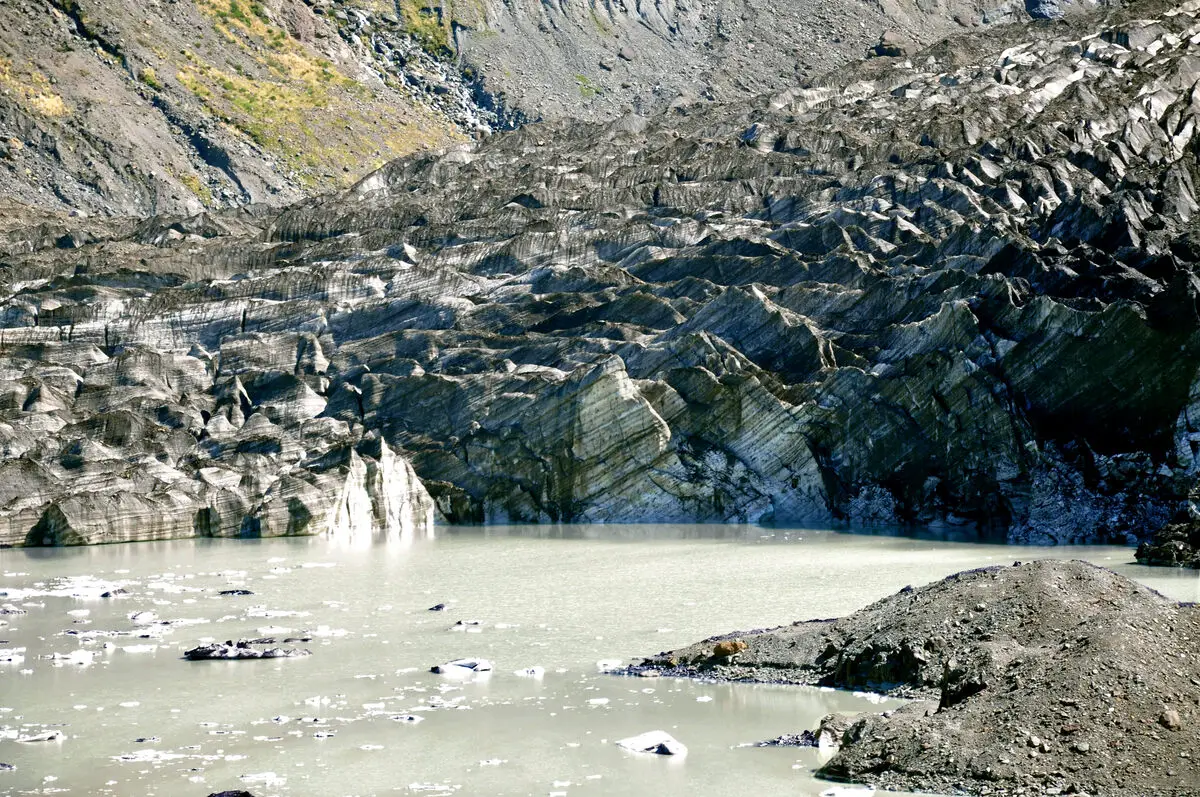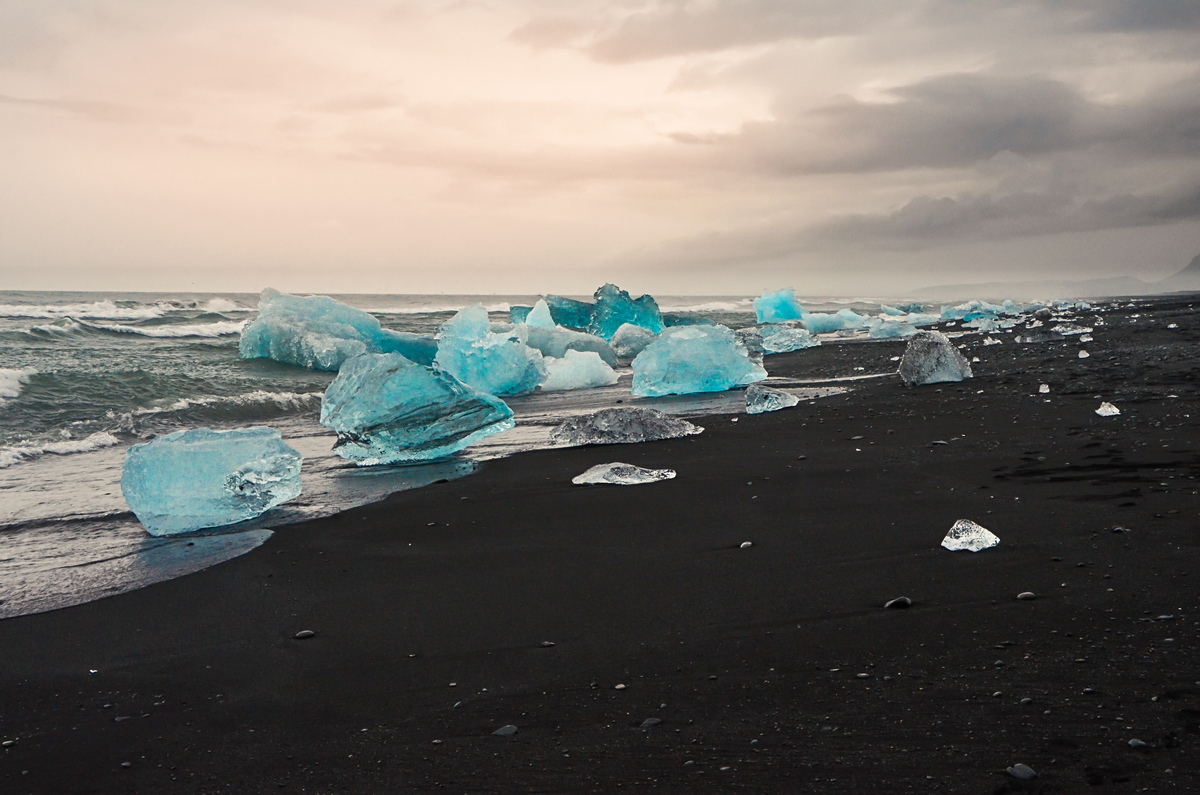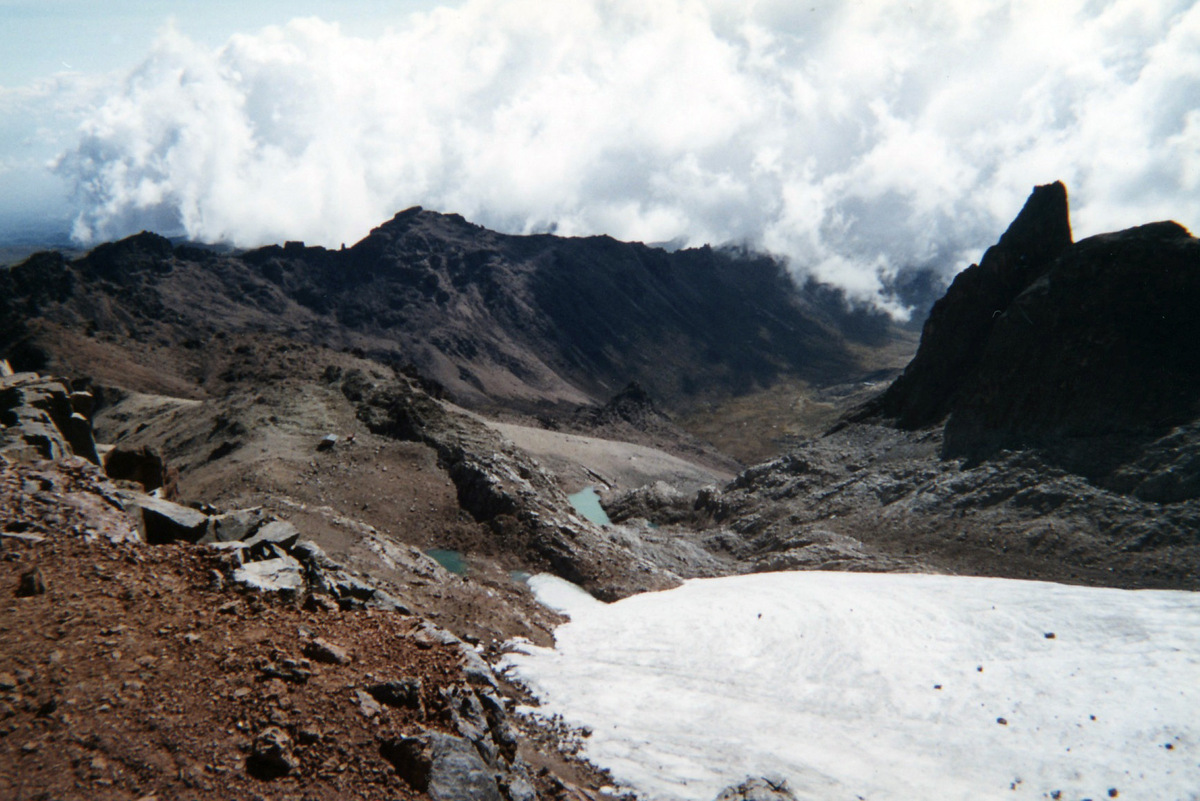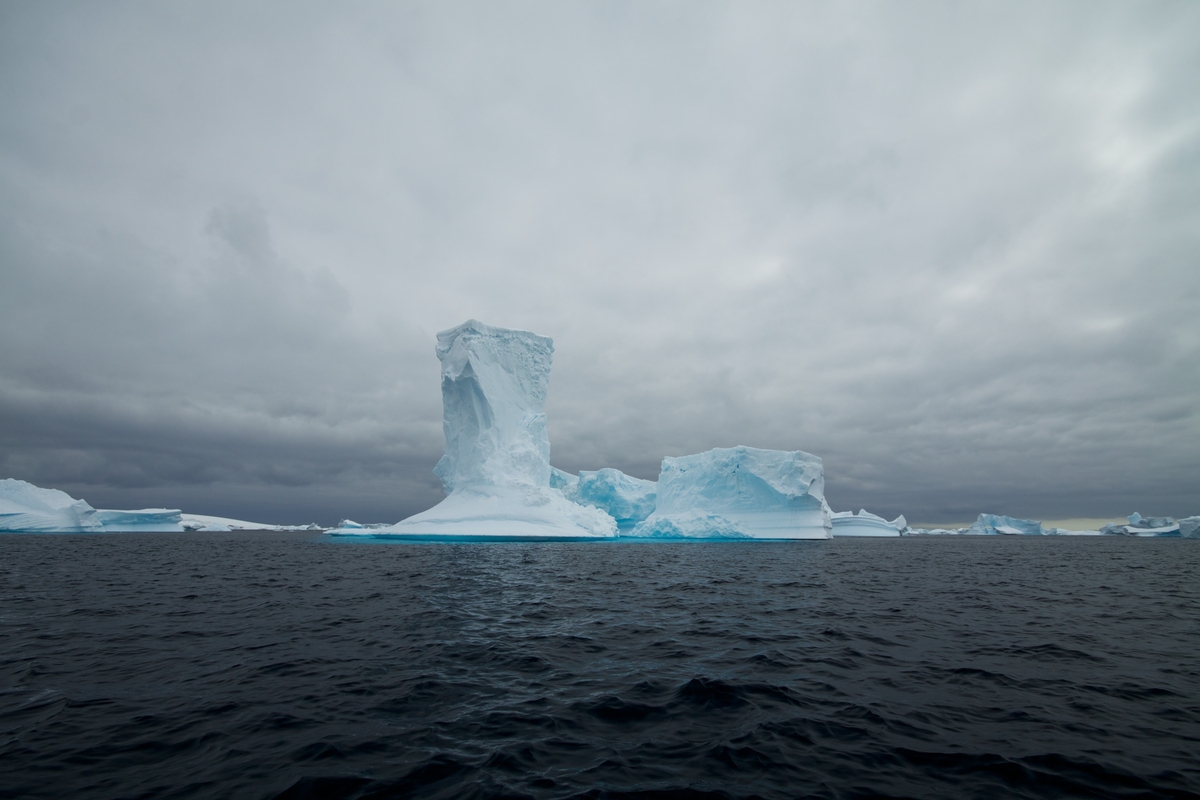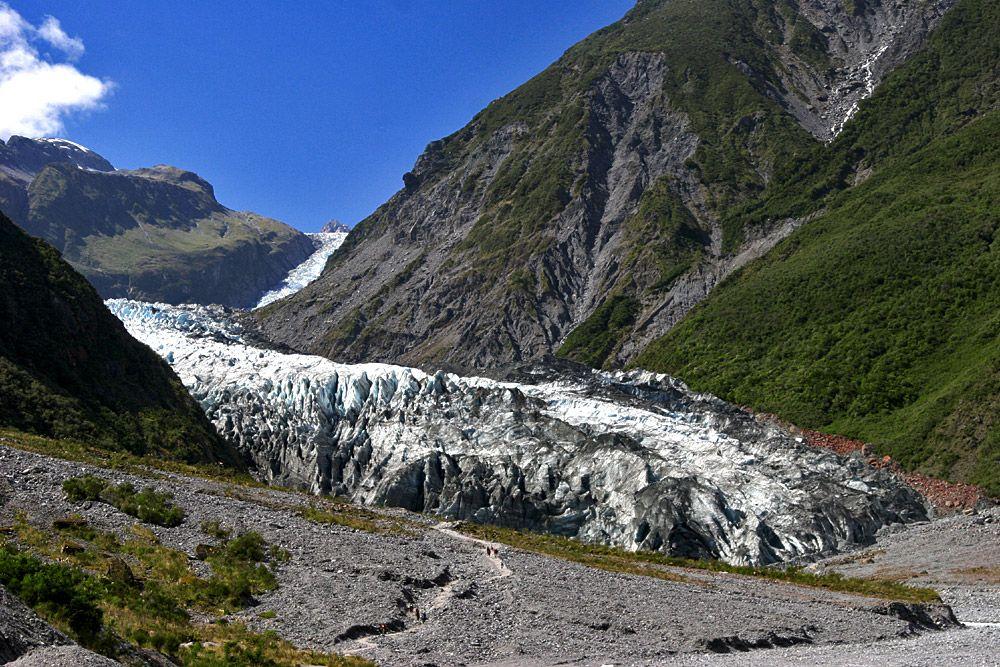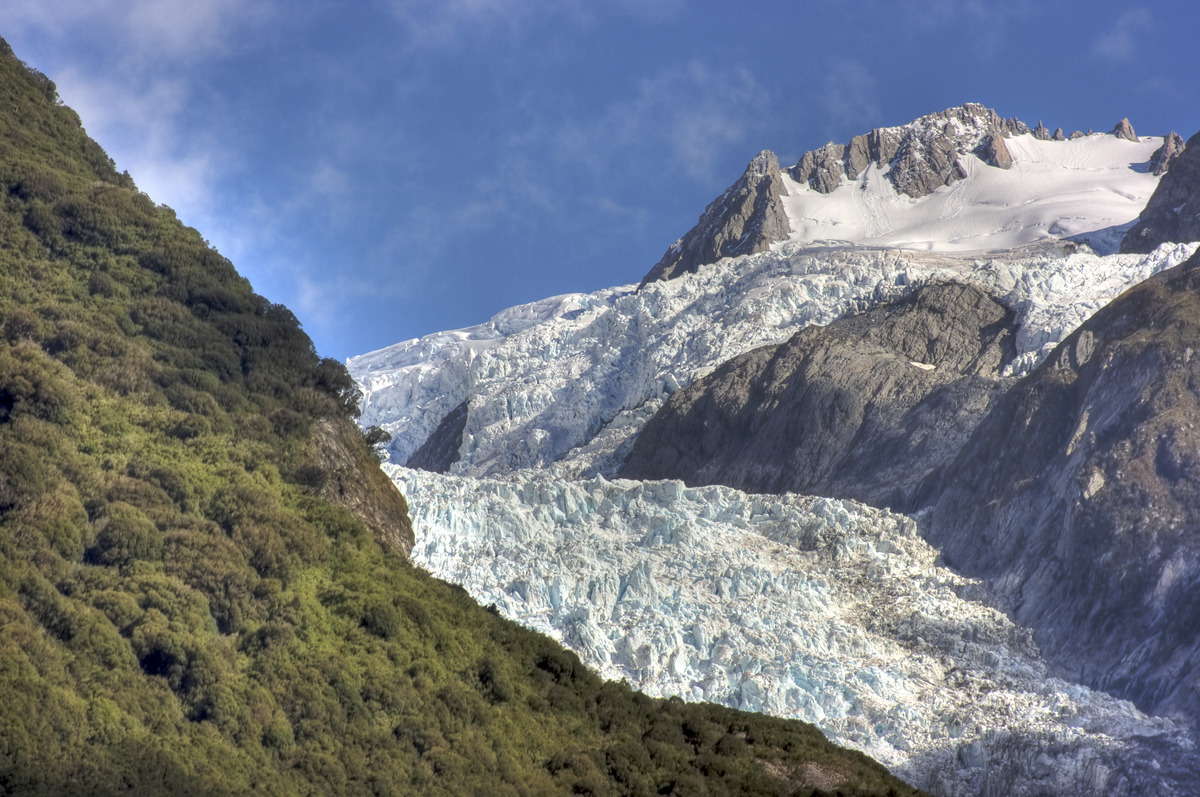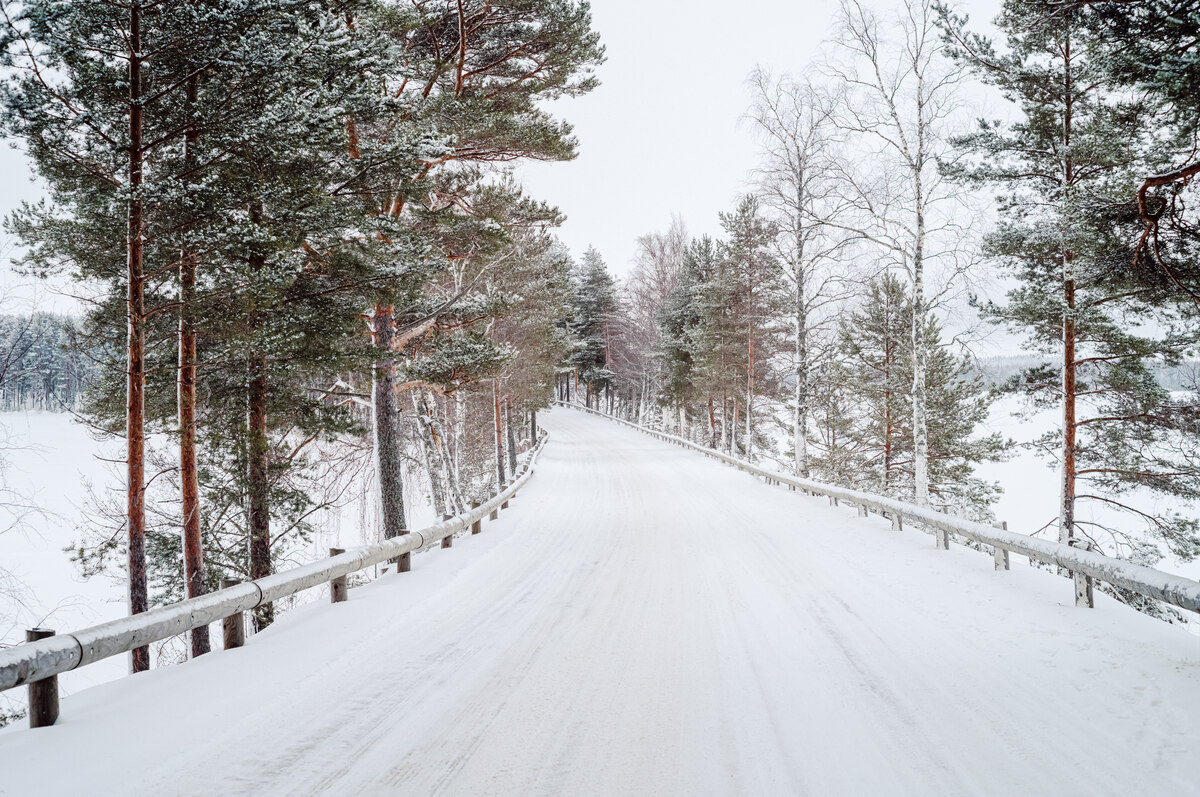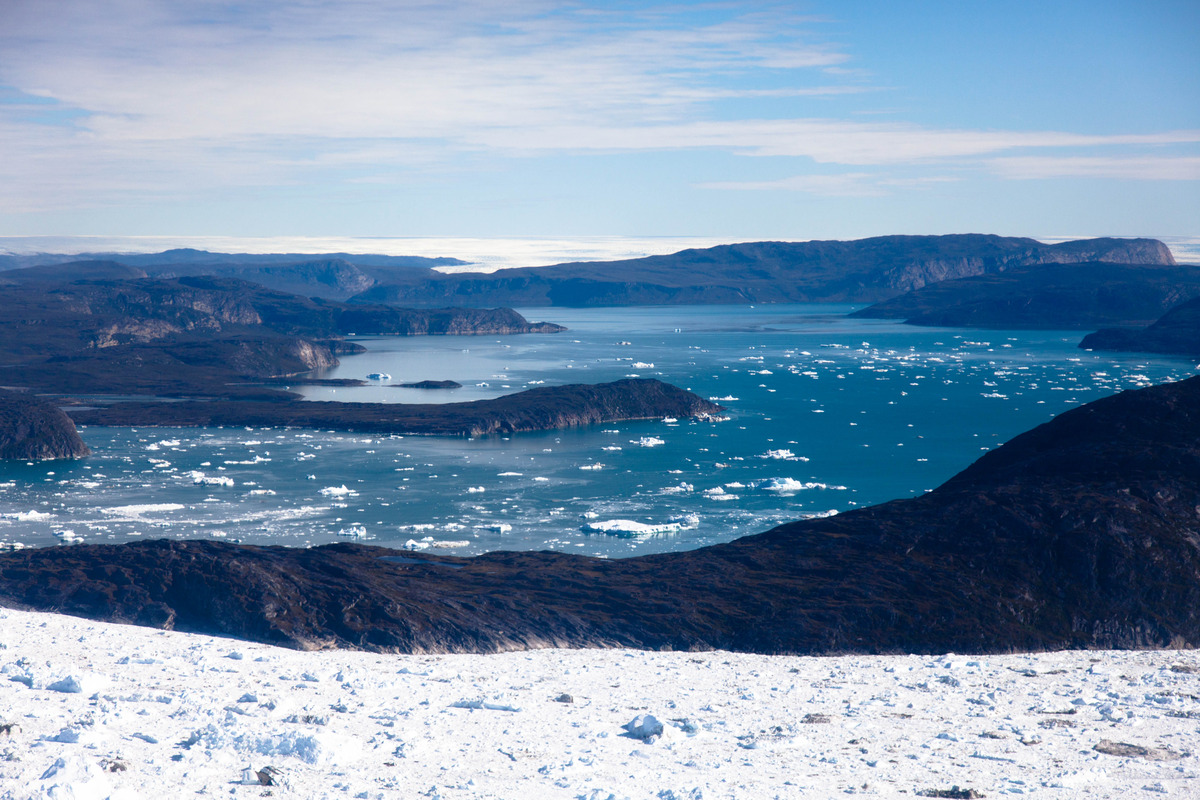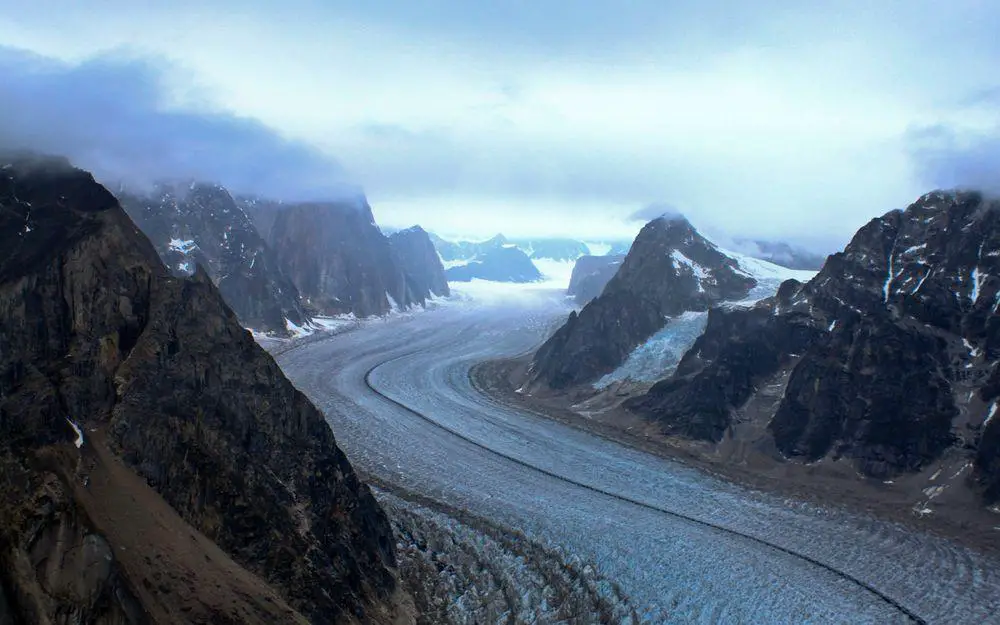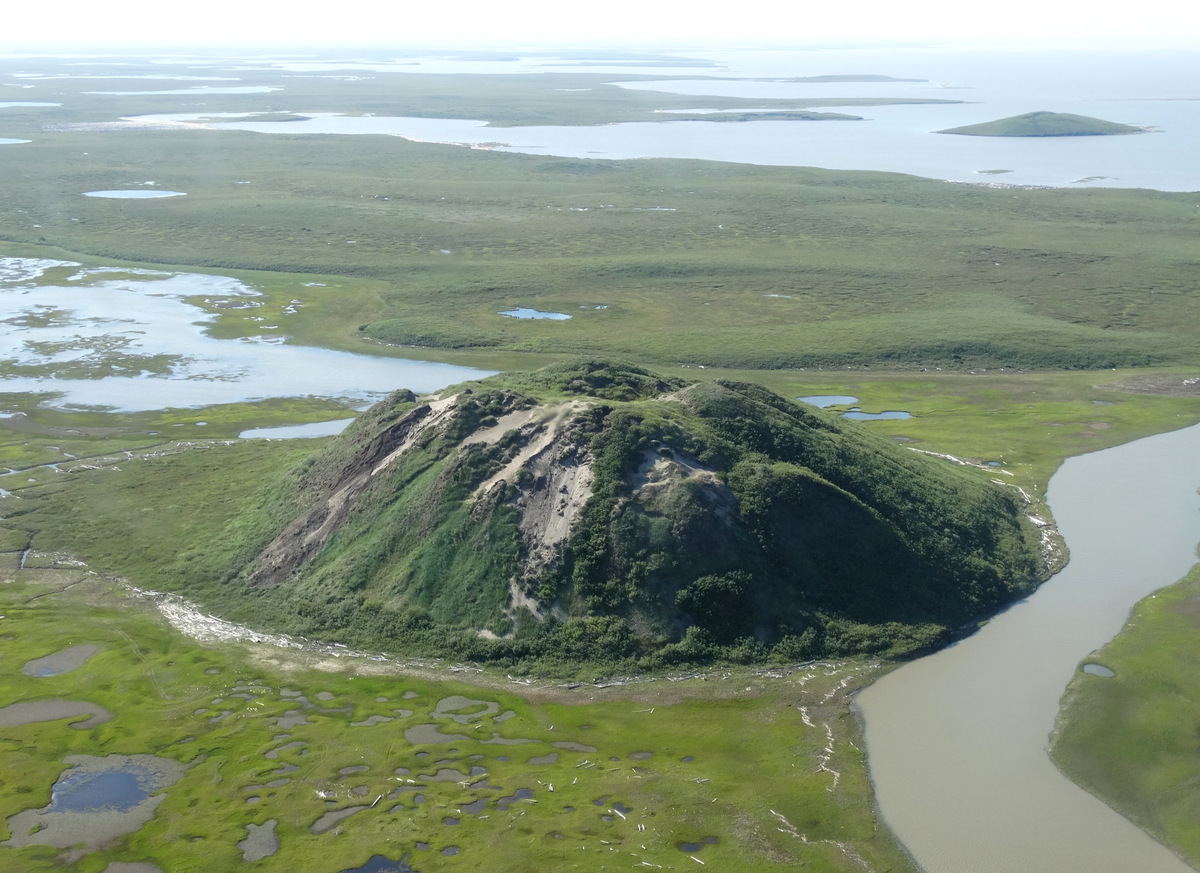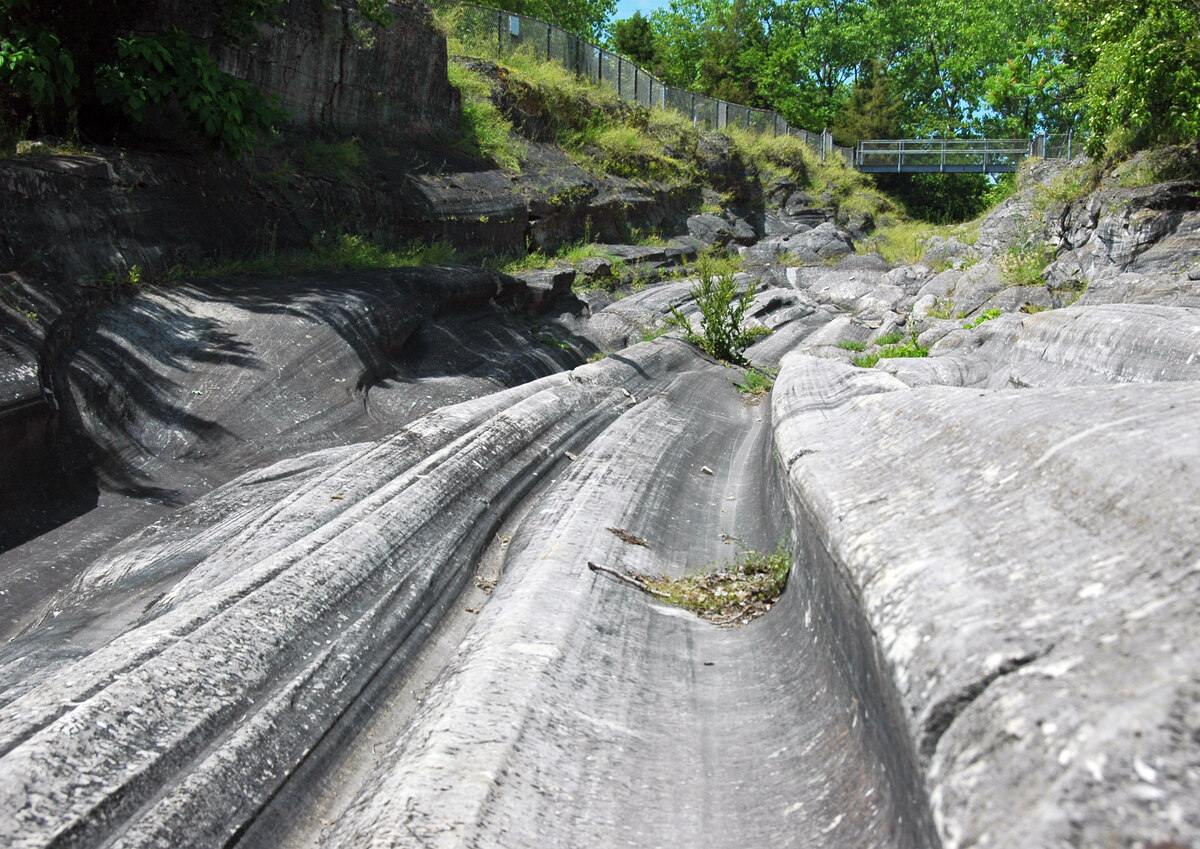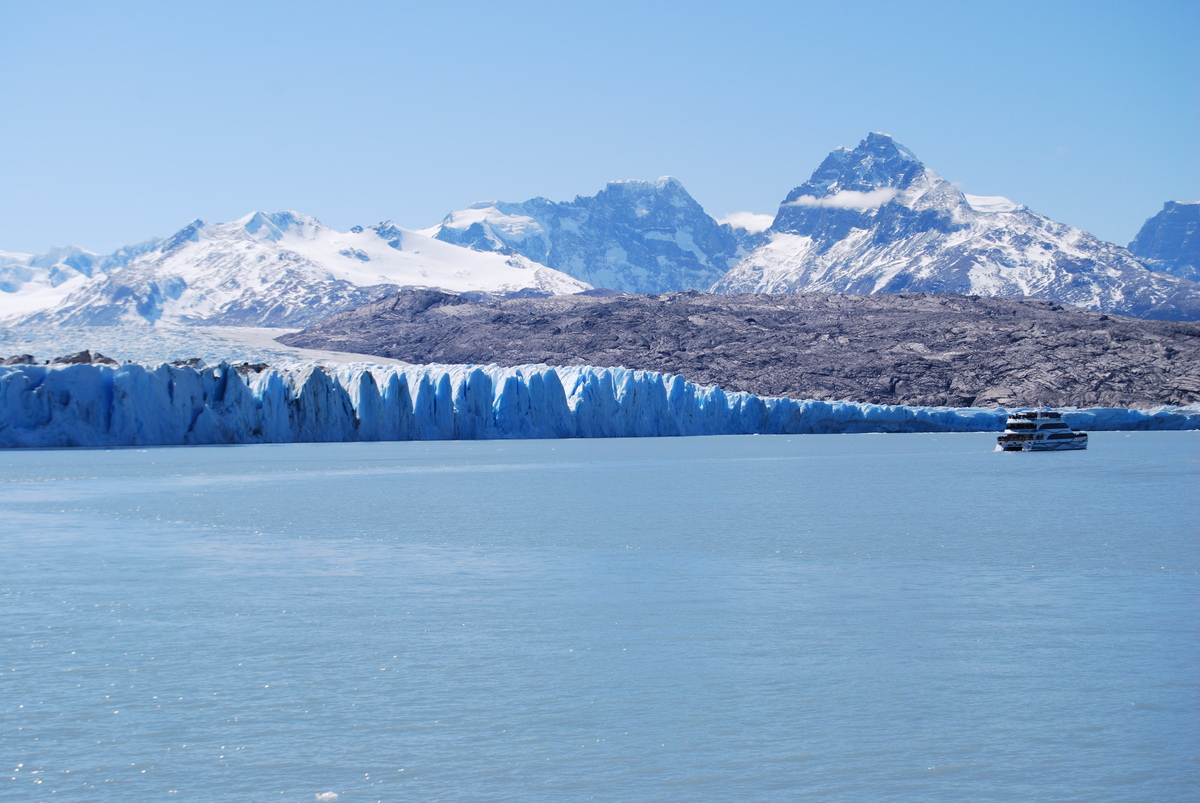Wondermondo 🢖 Categories of wonders 🢖 Geological wonders 🢖 Glacial landforms
Category
Glacial landforms
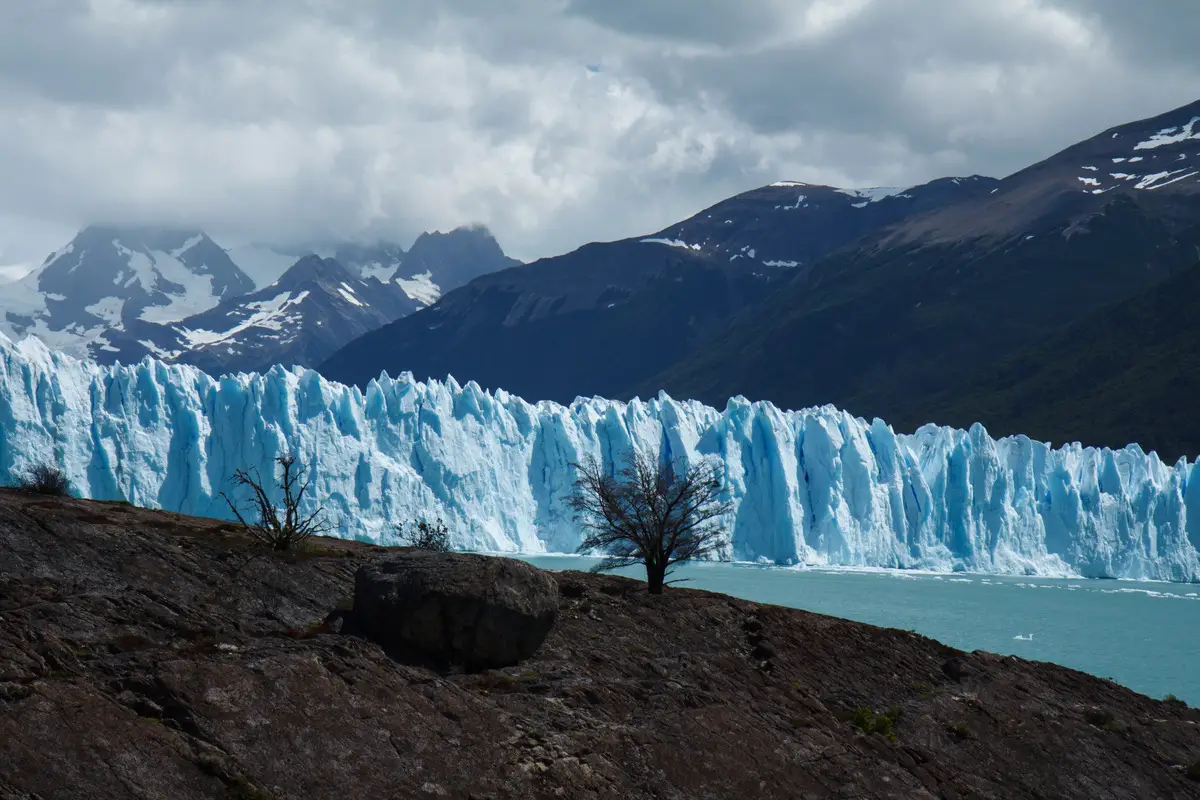
 Described glacial landforms
Described glacial landforms
If you see this after your page is loaded completely, leafletJS files are missing.
 What is included in this category?
What is included in this category?
This category includes the most impressive glacial landforms in the world.
What are glacial landforms?
The Earth has gone through at least five major ice ages and currently we live through one of them. Each of these ice ages had multiple cycles of glaciation, when incredible masses of ice advanced over the surface of the Earth, sometimes covering almost the whole of it. During the Ice Ages there are shorter periods of warmer climate – interglacials – and we currently live in such a period.
The current – Quaternary Ice Age – continues for some 2.6 million years. Over the last 740 000 years there were some eight such glaciations. The current landscape in many countries was formed by the giant mass of ice and its meltwater of the Last Glacial Period that ended some 11 000 years ago. On a geological scale, it’s an instant ago.
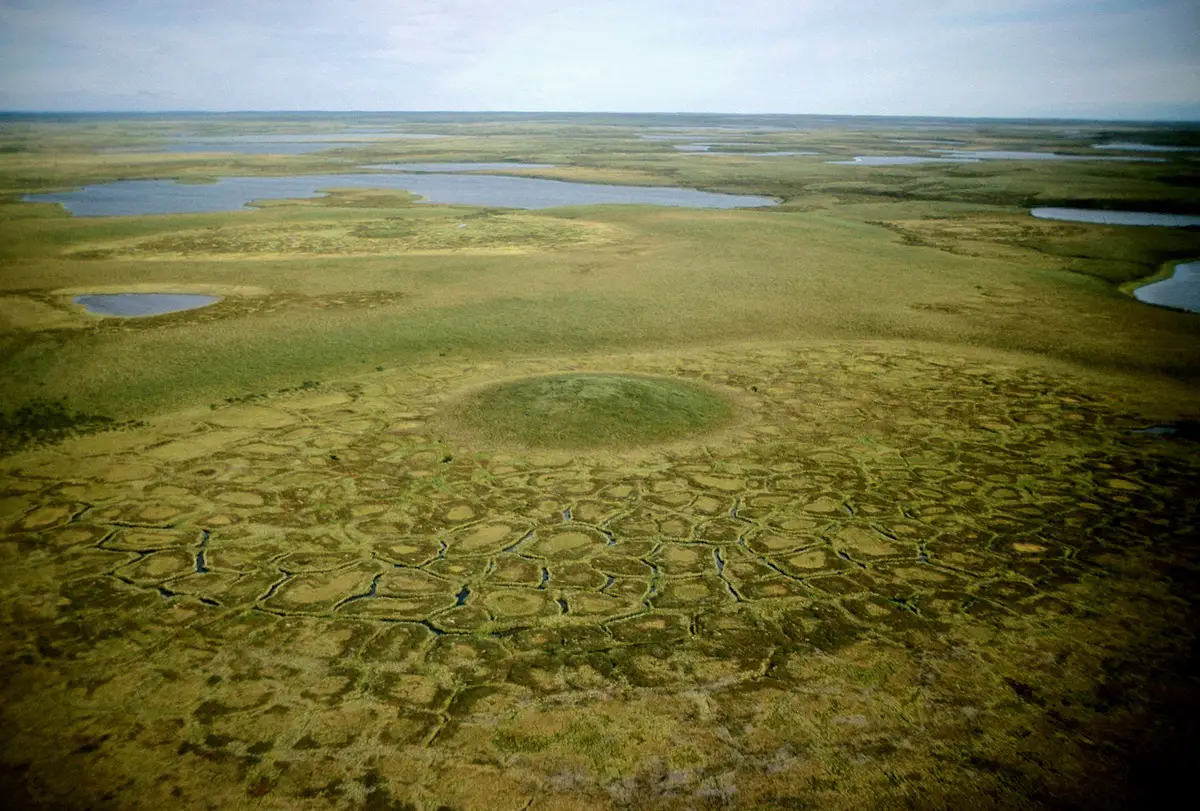
The most impressive glacial landforms, of course, are glaciers themselves. A glacier is one of natures most impressive spectacles: a gigantic mass of flowing ice that usually ends in a sea or lake with continuous collapses of the advancing wall of the ice.
But there are numerous other landforms that have been created by the ice. This page will not list all of them: the list would be very long and would include almost any relief form from the lesser known congeliturbates and pingos to the everyday things like lakes, hills and many large, rounded stones in the middle of fields – glacial erratics.
Some unusual effects and phenomena of glacial landforms
- Mountain glaciers that descend into seas and lakes. Their front is a blue ice wall that rises high above the water. This wall continuously collapses and creates floating pieces of ice that may land on the bottom in shallower areas. There are many such gorgeous glaciers around the world but some of the most impressive ones are in Patagonia.
- Mountain glaciers in the warmer regions of the world. There are glaciers near the equator and near hot deserts. Around these glaciers form unique biotopes with rare species.
- Landforms that have been formed by permafrost. Ice and soil may form such unusual features as pingos (sometimes emitting a kind of cold water fountains!), ice-wedge polygons and diverse congeliturbates. These strange formations are surprisingly little known in the world.
There are numerous other unusual glacial formations, such as fjords and hanging valleys, glacial cirques, erratic boulders, eskers and many others.
 Top 25 locations with the most impressive glacial landforms
Top 25 locations with the most impressive glacial landforms
Africa
Mount Stanley
Democratic Republic of the Congo and Uganda
The third highest mountain in Africa, 5,109 m high (Margherita Peak). The summit area contains glaciers and it is possible to descend with skis up to 800 m vertical distance, which is a highly unusual experience in equatorial Africa.
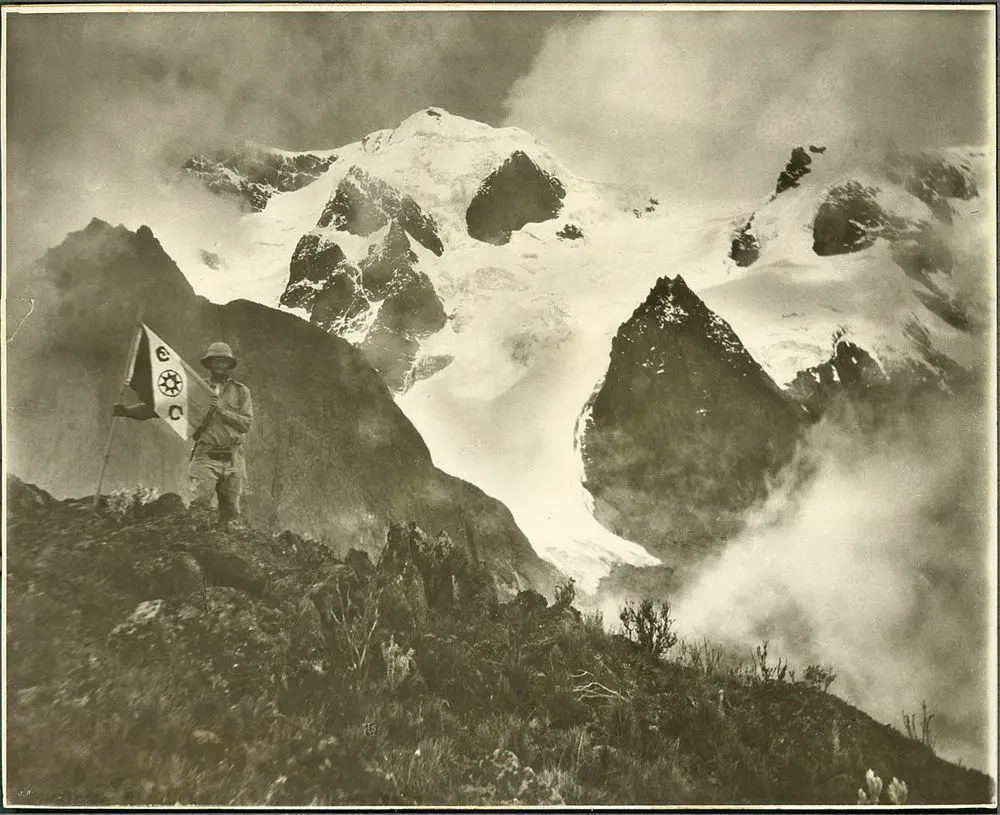
Glaciers of Mount Kenya
Kenya
Glaciers close to equator on 5,199 m high mountain. The largest glacier here is Lewis Glacier. All glaciers of Mount Kenya are disappearing and in a few decades they might be lost. In the night here often is freeze and has formed a permafrost.
Antarctica and Subabtarctic Islands
Icebergs at Pleneau and Booth islands
Antarctica
Field of stranded icebergs (seen here for the most time) of highly unusual forms and shapes. The icebergs are stranded on the ground, thus they can be safely examined while navigating among them.
Stephenson Lagoon
Heard Island and McDonald Islands (Australia)
Large glacial lagoon that is unusual due to hundreds of floating and stranded icebergs from Stephenson Glacier.
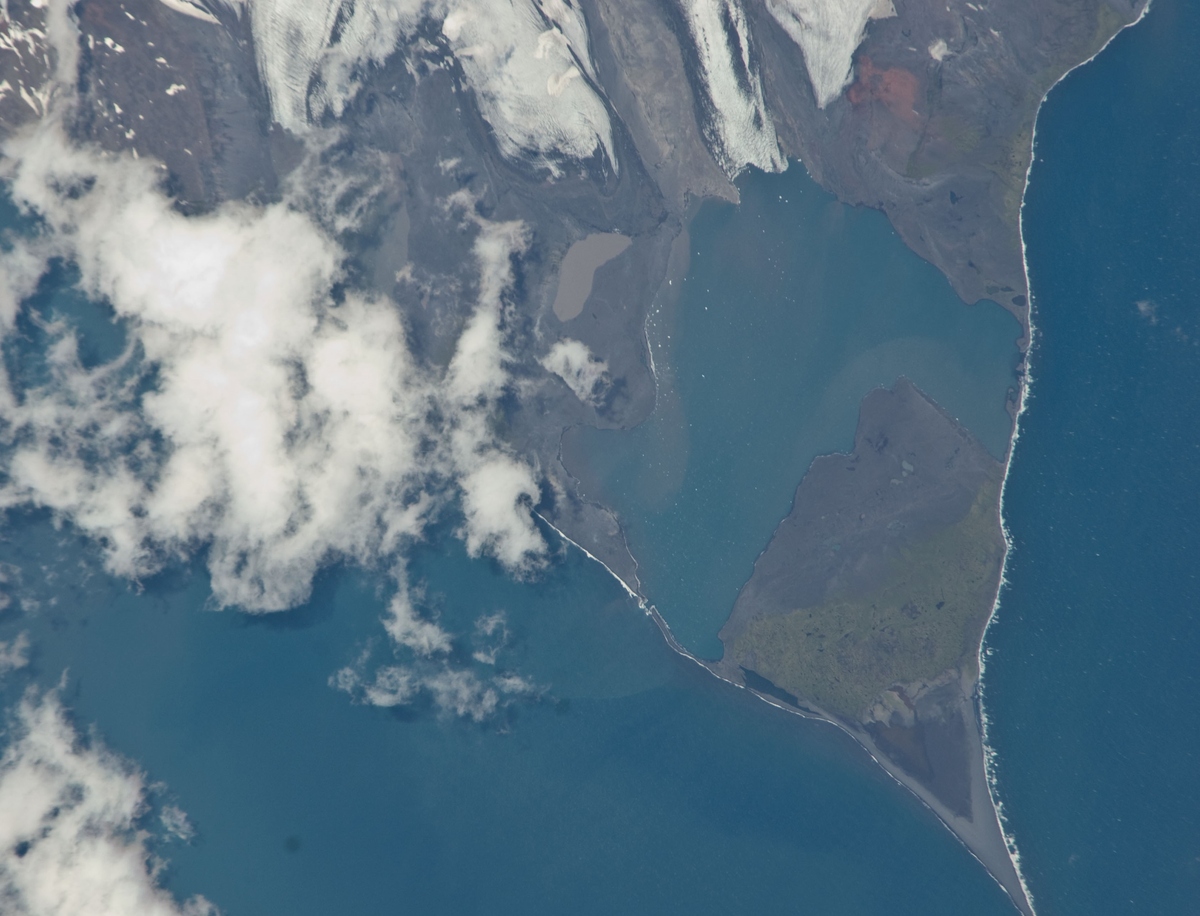
Asia
Fedchenko Glacier
Tajikistan
The largest glacier of the world outside polar regions. Narrow, 77 km long and up to 1,000 m thick flow of ice.
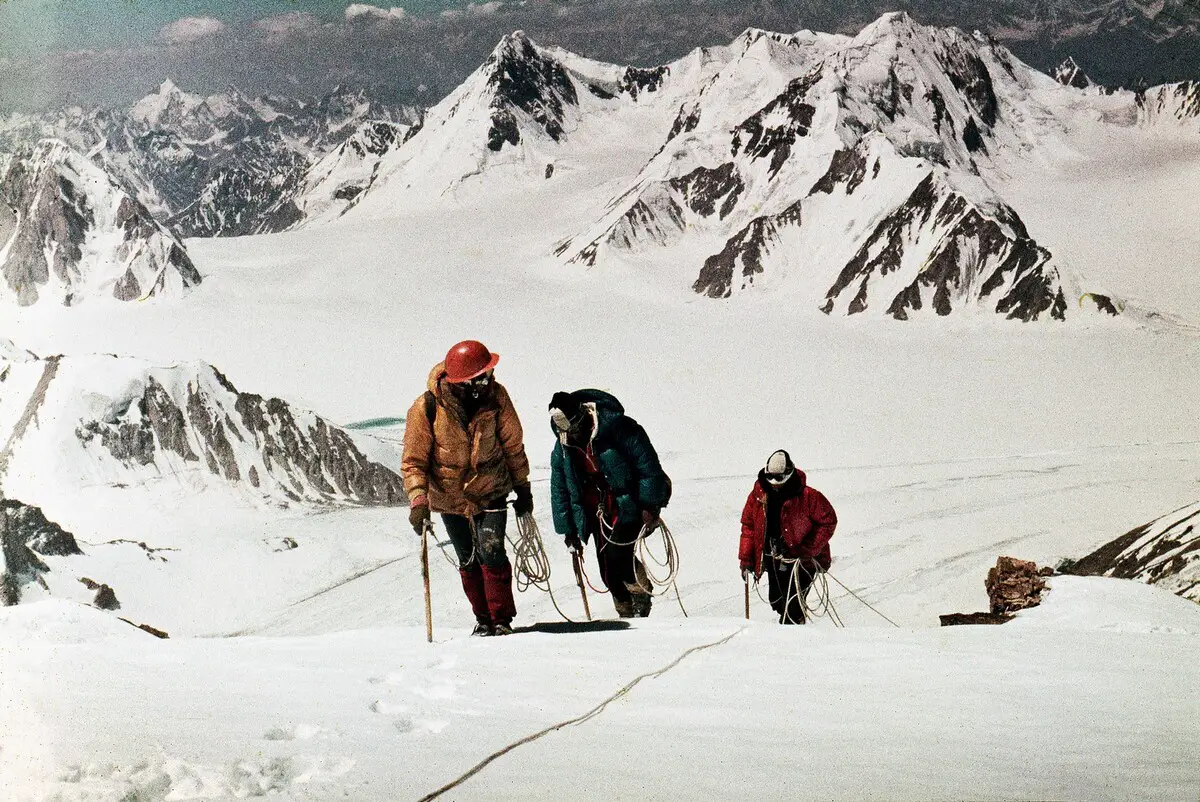
Australia and Oceania
Fox Glacier
New Zealand, West Coast
A gorgeous and very interesting glacier whose descent is so steep that the ice ends up close to the rainforest.
Franz Josef Glacier
New Zealand, West Coast
Glacier whose descent is so steep that the ice ends up close to the rainforest.
Europe
Kvadehuksletta
Svalbard (Norway)
One of the most unusual glacial landforms: numerous perfect circle-shaped stone ridges and labyrinth patterns shaped by frost (congeliturbates). Many stone ridges are arranged in long rows.
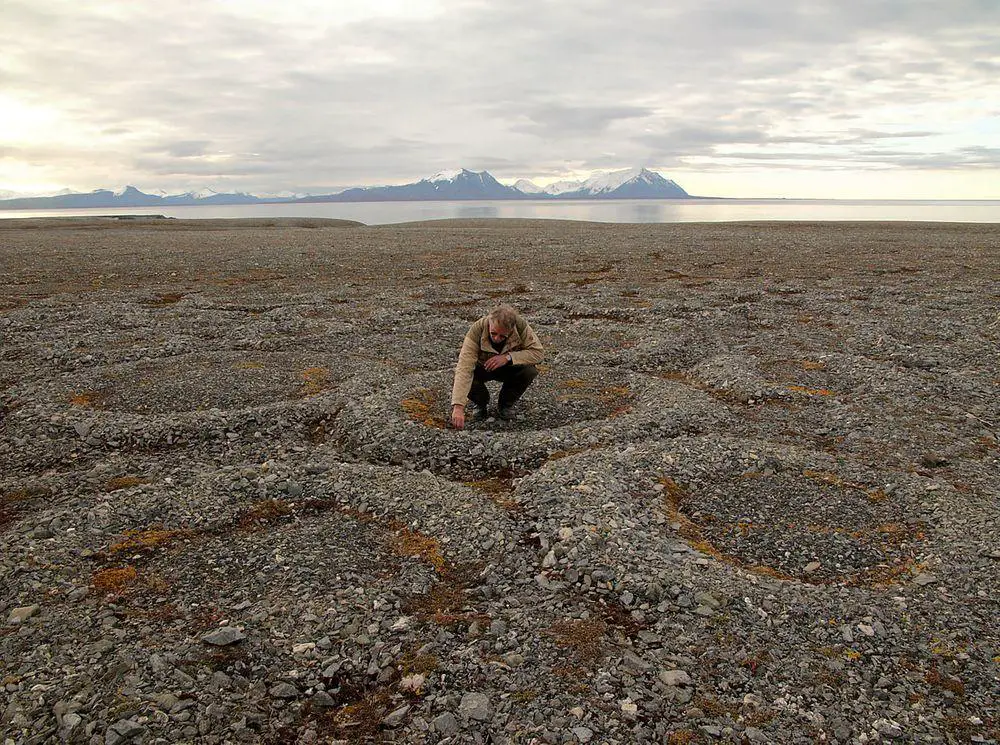
Punkaharju
Finland
An interesting esker. This esker forms a narrow ridge – land strip that divides Puruvesi and Pihlajavesi lakes. This land stip is some 5.7 km long and at some places just 10 m wide. A road that is recognised as the most scenic road in Finland, goes over it.
Fløtspingo and other Reindalen pingos
Svalbard (Norway)
Highest pingos in Svalbard and some of the highest open system pingos of the world, up to 42 m high. Pingos of Reindalen most likely contain unfrozen salty water under pressure – there have been reports about up to 60 m high geyser-like spouts of water coming from similar structures further south in Svalbard.
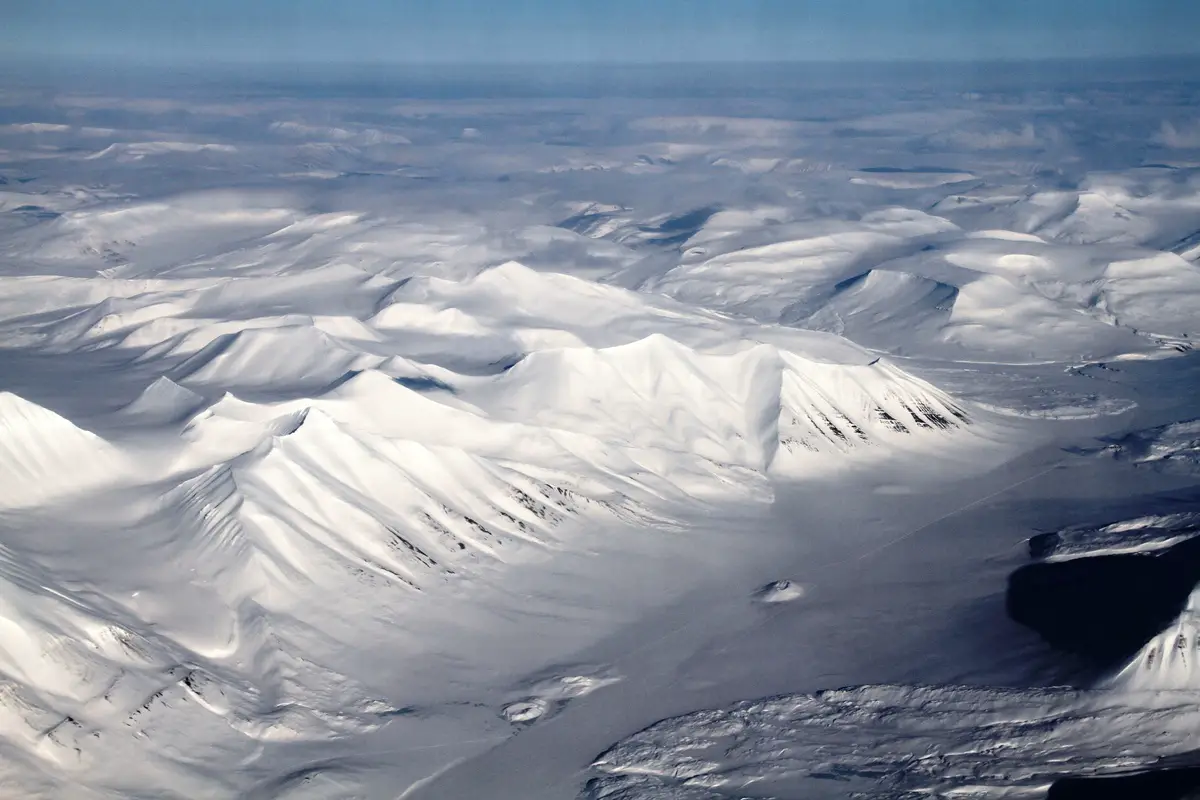
Jökulsárlón
Iceland
Glacier lagoon between Vatnajökull glacier and ocean. The lake is adorned with numerous floating icebergs. There have been spotted even seals.
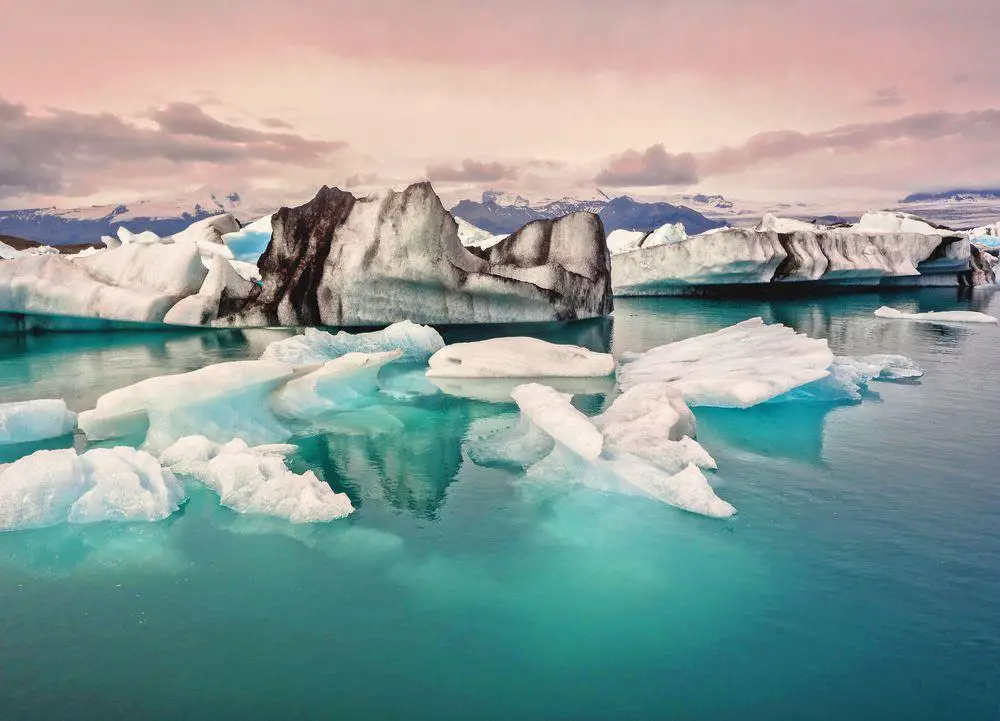
North America
Hubbard Glacier
United States, Alaska
Large, 122 km long glacier that is advancing. Step by step it is blocking the outlet of Russel Fjord, causing massive outbursts of water.
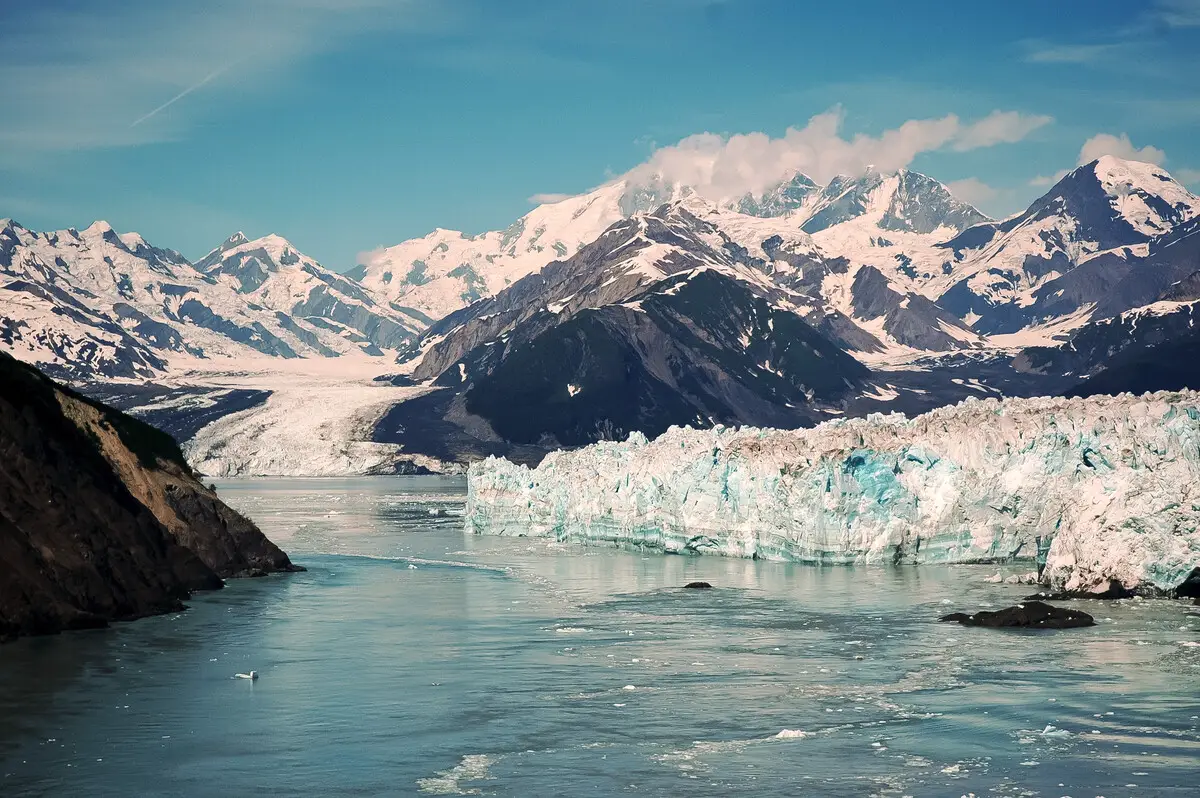
Ilulissat Icefjord (Kangia)
Greenland (Denmark)
Unique fjord with Sermeq Kujalleq glacier at its end. This is the most productive glacier in the Northern Hemisphere with the fastest glacier in the world that flows 45 m per day and produces many icebergs. Many icebergs are up to 1 km high and remain stranded in the fjord until pushed by the force of glacier again.
Ruth Glacier
United States, Alaska
A spectacular glacier that flows for 16 km among cliffs that rise up to 1,600 m high.
Elephant Foot Glacier
Greenland
An unusual glacier – a giant poodle of ice. This near perfect circular glacier has a diameter of 5 km.
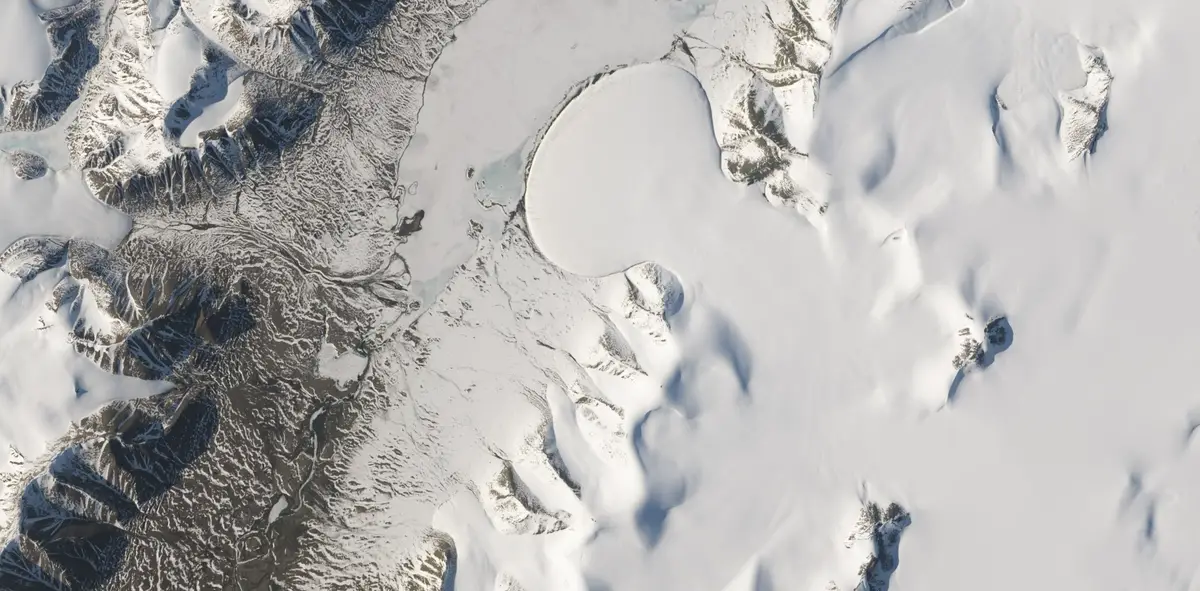
Pingo Canadian Landmark and Ibyuk Pingo
Canada, Northwest Territories
A protected area with an area of 1 600 ha. This are includes some 1,350 pingos – conical hills with icy cores, formed by permafrost (and not glaciers). This is the greatest world’s concentration of these glacial landforms. Includes Ibyuk Pingo, a 49 m high pingo, the highest in Canada. This pingo (and others) continue to grow. Area includes also numerous places where tundra polygons have formed – these formations look impressive from the air.
Mendenhall Glacier Ice Caves
United States, Alaska
Beautiful ice caves in the deep blue Mendenhall Glacier. Caves are formed by streams leaving the glacier. As the glacier is dynamic and, mostly receding due to global warming, the caves also are constantly changing and every year could be in different locations.
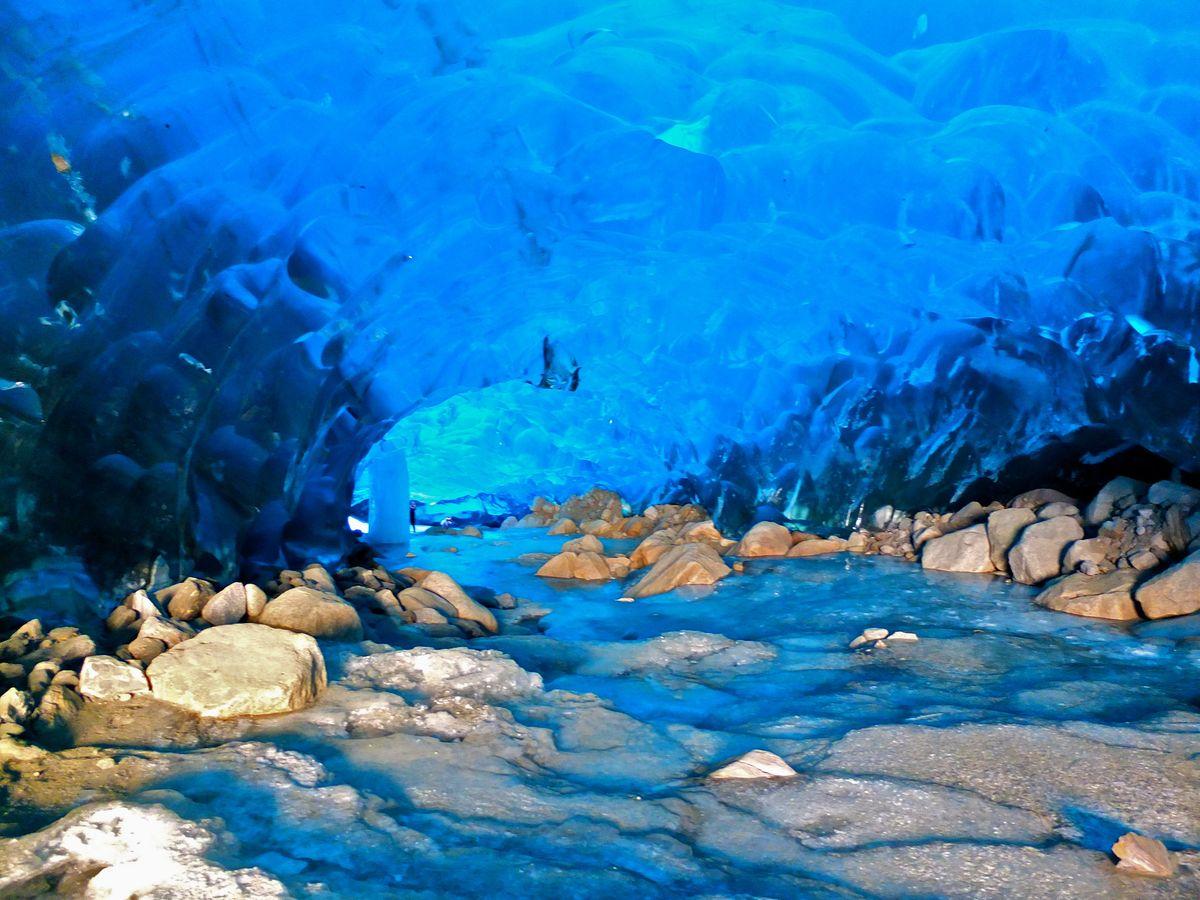
Kelleys Island Glacial Grooves
United States, Ohio
Some of the world’s most impressive glacial striations. The glacier in a 120 m long outcrop has carved grooves that are up to 4.5 m deep and 9 m wide. There are similar grooves on other Lake Erie islands, most likely created by the glacial meltwater.
Grashopper Glacier, Montana
United States, Montana
Small, 0.3 by 0.4 km large glacier that now has divided into several parts and may disappear. Tens of millions of locusts are entombed in the ice. These insects belong to multiple species and many are extinct now. It is possible that swarms of locusts were caught by snowstorms there repeatedly, the oldest finds are more than 100 thousand years old. Nearby are some more small glaciers with locusts and grashoppers entombed.
South America
Perito Moreno Glacier
Argentina, Santa Cruz
One of the great Argentinian glaciers that ends with an impressive wall in Argentino Lake, creating unusual, blue icebergs in the lake. The glacier blocks an arm of the lake – Brazo Rico. Due to this in Brazo Rico, the water level rises and every few years there are impressive ruptures – breakthroughs of water towards the main body of Argentino Lake.
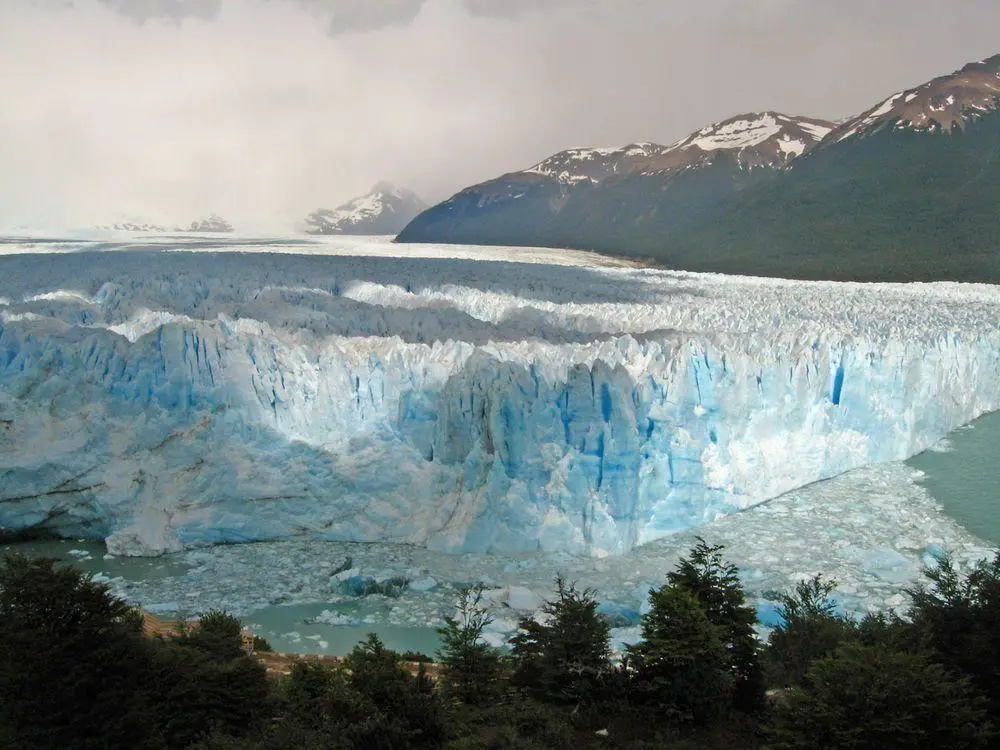
Spegazzini Glacier
Argentina, Santa Cruz
An impressive glacier that flows into Lake Argentino, forming a beautiful, blue wall that rises above the lake. Calving pieces of the lake create unusual, blue icebergs that float in the lake.
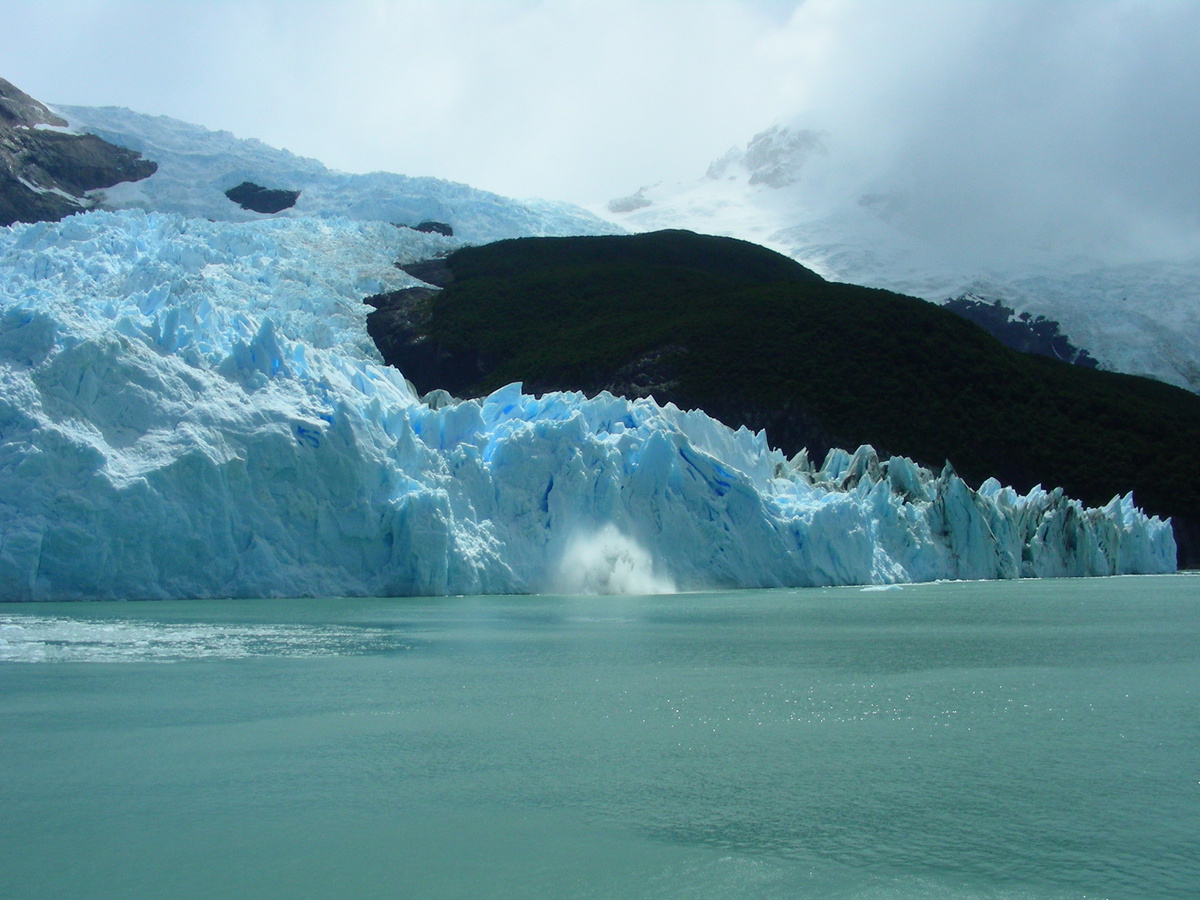
Viedma Glacier
Argentina, Santa Cruz
This glacier ends in a large lake and forms an impressive ice wall. As a result, in Lake Viedma are floating unusual, blue icebergs.
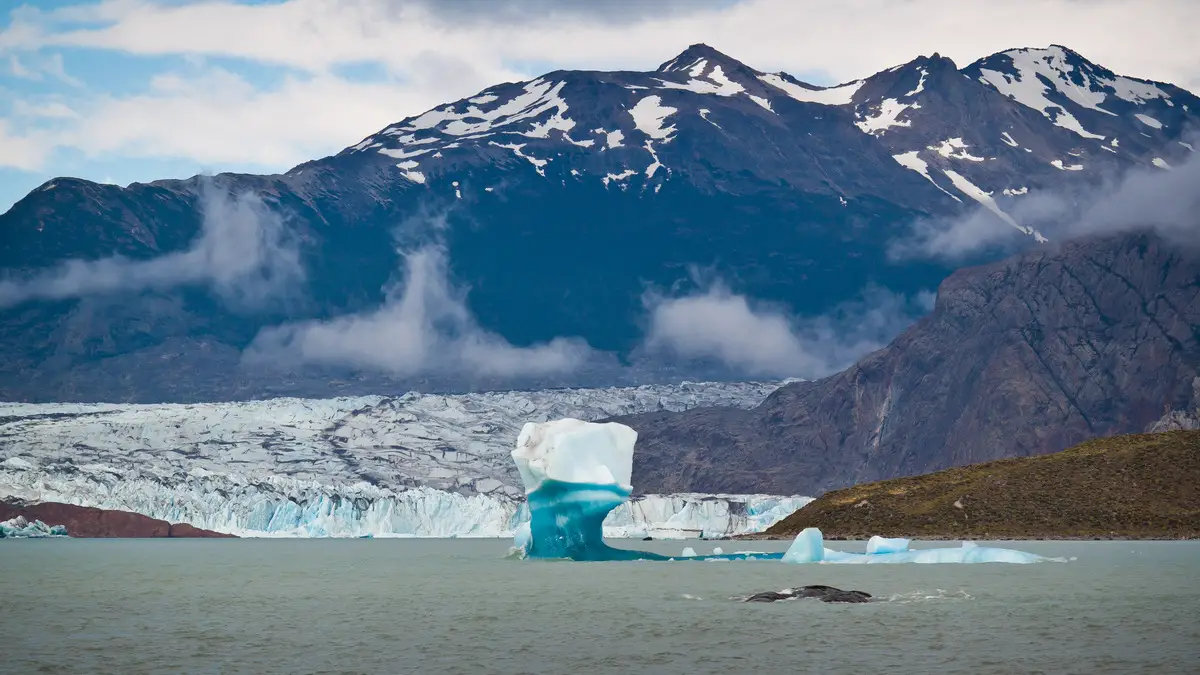
Onelli Lake
Argentina, Santa Cruz
A lake that is almost connected to the enormous Lake Argentino. Three glaciers end in Onelli Lake and, as a result, the lake is filled with countless unusually beautiful, blue icebergs.
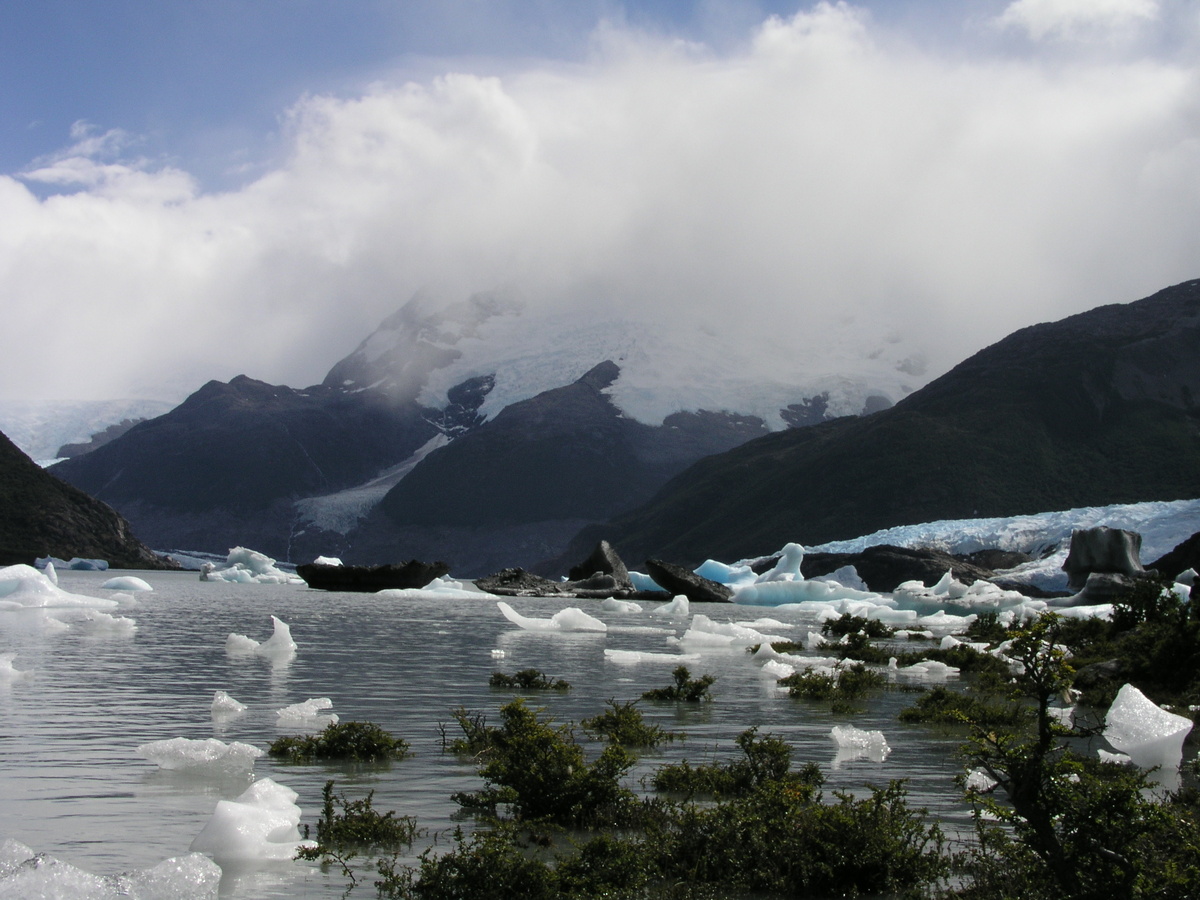
Ventisquero Negro (Glaciar Río Manso)
Argentina, Rio Negro
An unusual glacier in dark, nearly black color. This glacier contains large amount of particles and inclusions.
